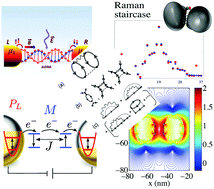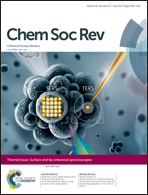Photonics and spectroscopy in nanojunctions: a theoretical insight
Abstract
The progress of experimental techniques at the nanoscale in the last decade made optical measurements in current-carrying nanojunctions a reality, thus indicating the emergence of a new field of research coined optoelectronics. Optical spectroscopy of open nonequilibrium systems is a natural meeting point for (at least) two research areas: nonlinear optical spectroscopy and quantum transport, each with its own theoretical toolbox. We review recent progress in the field comparing theoretical treatments of optical response in nanojunctions as is accepted in nonlinear spectroscopy and quantum transport communities. A unified theoretical description of spectroscopy in nanojunctions is presented. We argue that theoretical approaches of the quantum transport community (and in particular, the Green function based considerations) yield a convenient tool for optoelectronics when the radiation field is treated classically, and that differences between the toolboxes may become critical when studying the quantum radiation field in junctions.

- This article is part of the themed collection: Surface and tip enhanced spectroscopies


 Please wait while we load your content...
Please wait while we load your content...